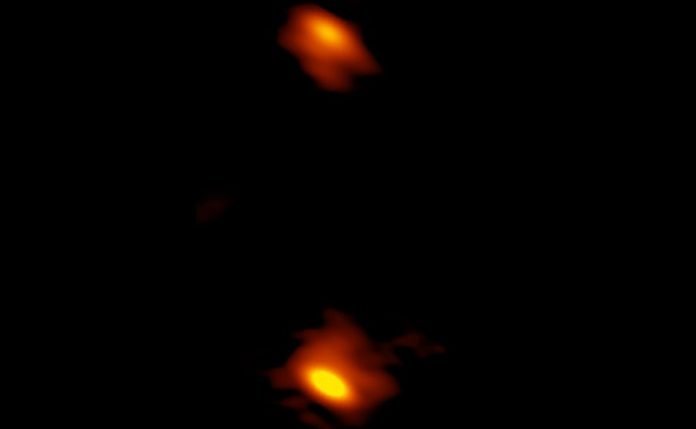
In a universe filled with astonishing phenomena, a recent discovery has shed light on a unique kind of galaxy that harbors a cosmic secret.
These galaxies, known as Compact Symmetric Objects (CSOs), are home to supermassive black holes at their centers.
Unlike other galaxies that boast enormous jets of material shooting out into space, CSOs have much shorter jets, giving them a more compact appearance.
This peculiar feature has puzzled astronomers for years, leading to a groundbreaking investigation by a team from Caltech.
For a long time, the scientific community thought CSOs were just galaxies in their early stages of development, expecting their jets to grow longer over time.
However, a detailed study led by Anthony Readhead, an emeritus professor of astronomy, and his colleagues, has unveiled that CSOs are not young at all.
Instead, they have a brief lifespan, marking them as distinct entities in the cosmic landscape.
“Think of them not as young galaxies, but as special ones with their own unique lifecycle, much like a dog has a different lifespan from humans,” explains Readhead.
Through meticulous analysis of over 3,000 potential CSOs, the team confirmed 64 and discovered 15 new ones, using high-resolution images from the Very Long Baseline Array (VLBA) and other telescopes.
Their findings, published in three separate papers in The Astrophysical Journal, reveal that CSOs shine brightly for about 5,000 years before their jets fade away.
This short-lived spectacle is due to a tidal disruption event (TDE), where a star gets too close to the black hole and is torn apart, fueling the black hole and igniting the jets.
The idea that TDEs could power these cosmic jets dates back to the 1990s, when Readhead first proposed it.
However, it took decades for the scientific community to gather enough evidence to support this theory.
The researchers now believe that the stars devoured by these black holes are not just any stars, but massive ones, leading to exceptionally energetic and longer-lasting TDEs than previously observed.
This discovery not only challenges previous assumptions about CSOs but also offers a new perspective on the relationship between massive stars and supermassive black holes.
By comparing the jets of younger and older CSOs, scientists can trace how these galaxies evolve over time, offering a glimpse into their life cycle that contrasts sharply with more familiar, long-lived jets found in other galaxies.
One of the most intriguing aspects of this research is the possibility that some CSOs might evolve into galaxies with much longer jets, similar to the powerful jets observed in Cygnus A, a galaxy with jets extending to about 230,000 light-years.
However, such cases are rare, occurring in perhaps one out of every hundred CSOs, likely during galaxy mergers that provide ample fuel for the black hole.
The findings from Readhead and his team open up a new avenue for exploring the universe, offering insights into how supermassive black holes interact with their surroundings.
These CSOs, with their fleeting yet brilliant jets, add another layer of complexity to our understanding of the cosmos, highlighting the diverse and dynamic nature of galaxies.
As astronomers continue to study these remarkable objects, they hope to uncover more about the mysterious forces that shape our universe.



